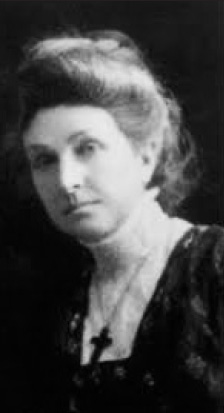Elaine Goodale Eastman was born on a small farm in Mount Washington in the Berkshire Hills, in Massachusetts, on Oct. 9, 1863. She was the daughter of a notable colonial family, and her father, Henry Goodale, could trace his family tree all the way back to 1632, to an ancestor who settled in Salem, Mass.
 Her mother was very religious and rather controlling. She assumed Elaine’s education herself rather than sending her to school. Music and poetry were emphasized as well as a focus on becoming a missionary. Elaine had a younger sister, Dora, with whom she was extremely close.
Her mother was very religious and rather controlling. She assumed Elaine’s education herself rather than sending her to school. Music and poetry were emphasized as well as a focus on becoming a missionary. Elaine had a younger sister, Dora, with whom she was extremely close.
When she was 18 she left home and became a teacher at the Hampton Missionary School in Virginia. The school was divided into three separate sections: one for white students, another for blacks, and the third for Indians. This made Elaine uncomfortable and she soon requested a transfer to the Sioux Agencies, which were in the Dakota Territories.
She moved to White River Lodge (in the Dakota Territories) in 1886, where the closest white person was miles away. She settled in and studied the language of the Dakota people and was soon fluent. She then convinced the commissioner of Indian affairs, John Atkins, of the need for an Indian industrial day school, where cooking, sewing, and gardening would be taught along with academic subjects.
She became the first government-appointed teacher at White River camp. Enrolled in her class were 50 students ranging in age from 6 to 16, and none could speak a word of English.
Post-Civil War, there was a large movement by the U.S. government to educate former slaves and it also involved Native Americans, in an attempt to “civilize” all non-white people.
In 1889 she returned to her native Massachusetts with the goal of making the world aware of the plight of the Indians. She began to write and lecture on their behalf. William F. Vilas was the Secretary of the Interior at this time and he created a new office, Supervisor of Education, in the two Dakotas. Presumably he had been influenced by Elaine’s writing and appointed her as the first person to direct this program.
Upon her return to the Dakotas, she had 60 schools in her jurisdiction. She traveled far and wide, alone, in a horse-drawn wagon to inspect and improve the schools. She trusted the Indians and always traveled unarmed.
In that role, she fought against the practice of removing Native American children from their families and sending them to distant boarding schools. She put her faith in reservation schools to “lift up” whole communities through assimilation. She was convinced that if Native people failed to assimilate, they would be annihilated.
“A gifted, lovable, self-reliant people stood at the crisis of their fate. The old way of life was hopelessly destroyed and their more far-seeing leaders ready and eager to advance into a new world. The hour had struck for a swift transition to another pattern of life altogether, before their self-respect had been undermined and their courage exhausted. Education was the master-key.”
In the aftermath of the Wounded Knee massacre in December 1890, she cared for the wounded with Dr. Charles Eastman, a Santee Sioux doctor of part Anglo-American ancestry. Eastman (also known as Ohiye S’a) was raised off the reservation and attended medical school in Boston.
Eastman wanted to give back to his community as a reservation physician and accepted an appointment on the Pine Ridge Reservation, where he first met Elaine, who was a teacher there and a published author. They fell in love and were married in 1881.
They lived with their growing family in the West for several years. Elaine collaborated with him in writing about his childhood and Sioux culture; his nine books were popular and made him a featured speaker on a public lecture circuit. She also continued her own writing, publishing her last book of poetry in 1930, and a biography and last novel in 1935.
They had six children together and eventually returned to Massachusetts because they both believed they could better educate their children there. She continued to write on issues that affected the Indians and reviewed books written about Indians for accuracy.
Margaret “Midge” Kirk is a slightly eccentric artist, writer, bibliophile, and hobby historian. She can be reached at eurydice4@yahoo.com or visit her website www.herstory-online.com.

